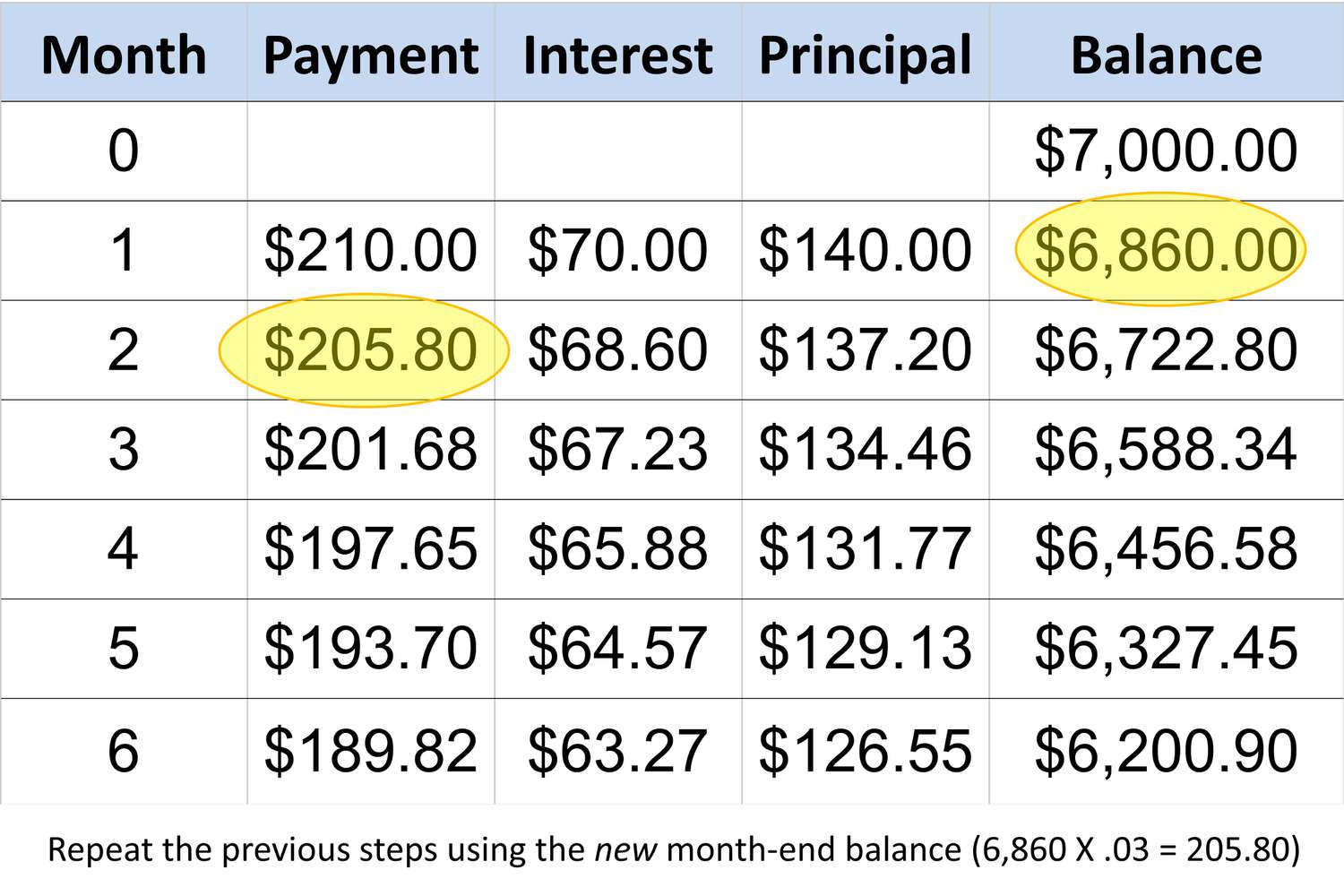

Finance
What Is The Minimum Payment For Care Credit
Published: February 27, 2024
Learn about the minimum payment for Care Credit and manage your finances wisely. Find out how to make the most of your financial options.
(Many of the links in this article redirect to a specific reviewed product. Your purchase of these products through affiliate links helps to generate commission for LiveWell, at no extra cost. Learn more)
Table of Contents
**
Introduction
**
Welcome to the world of CareCredit, where financial flexibility meets healthcare needs. CareCredit is a healthcare credit card designed to cover out-of-pocket expenses not covered by medical insurance, including deductibles, copayments, and elective procedures. This innovative financing solution allows individuals to access the care they need without delay, thereby promoting overall well-being.
Navigating the realm of healthcare financing can be daunting, and understanding the minimum payment requirements for CareCredit is crucial for responsible financial management. In this comprehensive guide, we will delve into the intricacies of CareCredit's minimum payment structure, shedding light on its importance and implications. By the end of this article, you will have a clear understanding of the minimum payment requirements for CareCredit and valuable insights into managing these obligations effectively.
Whether you're considering applying for CareCredit or already have an account, grasping the nuances of minimum payments is essential for making informed financial decisions. So, let's embark on this enlightening journey to unravel the mysteries of CareCredit's minimum payment requirements and empower ourselves with the knowledge to navigate the financial landscape of healthcare with confidence.
**
Understanding Care Credit
**
CareCredit is a specialized credit card that caters to healthcare expenses, offering individuals a convenient and flexible means to manage medical costs. Unlike traditional credit cards, CareCredit is tailored to cover various healthcare services, including dental, vision, cosmetic, and veterinary care. This financial tool serves as a lifeline for those facing unexpected medical expenses or seeking elective treatments that may not be fully covered by insurance.
One of the most compelling aspects of CareCredit is its promotional financing options, which allow cardholders to pay for qualifying expenses with deferred interest if the balance is repaid within a specified period. This feature provides much-needed breathing room for individuals managing healthcare costs, enabling them to access essential treatments without immediate financial strain.
Moreover, CareCredit offers a straightforward application process and quick approval turnaround, making it an accessible resource for individuals seeking timely medical care. The flexibility and convenience offered by CareCredit have positioned it as a valuable financial tool for millions of individuals and families across the United States.
Understanding the scope and versatility of CareCredit is fundamental to leveraging its benefits effectively. By familiarizing yourself with the range of healthcare services covered, the application process, and the promotional financing options, you can harness the power of CareCredit to address your unique healthcare needs while managing your financial responsibilities prudently.
**
Minimum Payment Requirements
**
When utilizing CareCredit for healthcare expenses, it is essential to comprehend the minimum payment requirements to maintain financial stability and uphold a positive credit standing. The minimum payment represents the lowest amount that must be paid each month to keep the account in good standing, ensuring that the balance is gradually repaid over time.
Typically, the minimum payment for CareCredit is calculated as a percentage of the total promotional or standard balance, with a minimum fixed amount if the calculated percentage is lower. It’s important to note that making only the minimum payment may result in accruing interest on the remaining balance, potentially extending the repayment period and increasing the overall cost of the healthcare expenses.
By understanding the minimum payment requirements, cardholders can effectively manage their financial obligations while optimizing the benefits of CareCredit’s promotional financing options. Timely and responsible payment practices not only contribute to a positive credit history but also help individuals avoid unnecessary interest charges and maintain control over their healthcare-related expenditures.
Furthermore, staying informed about the minimum payment requirements empowers individuals to budget effectively and plan for their healthcare expenses, fostering a proactive approach to financial management. This knowledge equips cardholders with the insights needed to navigate the complexities of healthcare financing while prioritizing their well-being.
As we delve deeper into the nuances of minimum payment requirements, it becomes evident that a comprehensive understanding of this aspect is pivotal for leveraging CareCredit as a valuable financial resource without succumbing to undue financial strain or credit-related setbacks.
**
Factors Affecting Minimum Payments
**
Several factors influence the minimum payments associated with CareCredit, shaping the financial obligations that cardholders must fulfill to maintain their accounts and manage their healthcare expenses effectively.
1. Balance Type: The type of balance, whether promotional or standard, directly impacts the minimum payment. Promotional balances may have different minimum payment requirements during the promotional period, necessitating careful attention to the terms and conditions to avoid unexpected financial implications.
2. Total Balance: The total outstanding balance on the CareCredit account plays a significant role in determining the minimum payment. As the balance fluctuates due to new charges or repayments, the minimum payment amount adjusts accordingly, influencing the cardholder’s monthly financial commitments.
3. Interest Rates: The interest rates associated with the CareCredit account affect the minimum payment requirements, especially for standard balances. Higher interest rates can lead to larger minimum payments, making it crucial for cardholders to assess the impact of interest on their financial obligations.
4. Payment History: A cardholder’s payment history, including any missed or late payments, can affect the minimum payment amount. Consistently maintaining a positive payment record can contribute to manageable minimum payments and favorable terms, while a history of delinquencies may lead to heightened financial responsibilities.
5. Credit Limit Utilization: The utilization of the CareCredit credit limit influences the minimum payment, particularly in relation to the available credit and the proportion utilized. Managing credit utilization prudently can help mitigate the impact on minimum payments and overall financial stability.
Understanding these factors is paramount for individuals leveraging CareCredit to navigate healthcare expenses. By recognizing the variables that shape minimum payments, cardholders can make informed decisions, optimize their financial management strategies, and proactively address their healthcare-related financial responsibilities.
**
Tips for Managing Minimum Payments
**
Effectively managing minimum payments for CareCredit is integral to maintaining financial wellness and maximizing the benefits of this healthcare financing solution. By implementing strategic approaches and prudent financial practices, individuals can navigate minimum payment requirements with confidence and ensure a sustainable path towards managing their healthcare expenses.
1. Budgeting and Planning: Develop a comprehensive budget that encompasses healthcare costs and minimum payment obligations. By allocating funds specifically for CareCredit payments within your budget, you can prioritize these financial responsibilities and avoid potential shortfalls.
2. Paying Above the Minimum: Whenever possible, strive to pay more than the minimum amount due. By exceeding the minimum payment, you can accelerate the reduction of outstanding balances, minimize interest accrual, and expedite the journey towards financial freedom from healthcare-related debts.
3. Monitoring Promotional Periods: For promotional financing options, such as deferred interest plans, vigilantly track the expiration dates and payment terms. Failing to adhere to the promotional terms can result in retroactive interest charges, underscoring the importance of meticulous planning and timely repayments.
4. Payment Automation: Consider setting up automatic payments for the minimum amount due to ensure consistency and avoid missed payments. Automation can streamline the payment process, mitigating the risk of overlooking financial obligations and incurring penalties.
5. Credit Utilization Management: Prudently manage your CareCredit credit limit utilization, aiming to keep it within a reasonable range. By exercising restraint in utilizing the available credit, you can regulate the impact on minimum payments and maintain a healthy credit profile.
6. Regular Account Review: Periodically review your CareCredit account statements to assess the impact of minimum payments on your overall financial plan. This practice enables you to identify any discrepancies, track progress towards debt reduction, and make informed adjustments to your financial strategy.
By embracing these tips and integrating them into your financial approach, you can navigate the minimum payment requirements for CareCredit adeptly, fostering financial stability and empowering yourself to manage healthcare expenses effectively.
**
Conclusion
**
In conclusion, understanding the minimum payment requirements for CareCredit is pivotal for individuals seeking to strike a harmonious balance between managing healthcare expenses and maintaining financial well-being. By delving into the intricacies of CareCredit’s minimum payment structure, individuals can equip themselves with the knowledge and strategies needed to navigate the financial landscape of healthcare financing adeptly.
CareCredit stands as a valuable resource, offering individuals the flexibility to address various healthcare needs while providing access to promotional financing options that alleviate immediate financial burdens. However, responsible financial management is essential to harnessing the full potential of CareCredit, and this includes comprehending and managing minimum payment obligations effectively.
By recognizing the factors that influence minimum payments, embracing prudent financial practices, and integrating strategic approaches into their financial planning, individuals can proactively manage their CareCredit accounts and steer clear of potential pitfalls associated with healthcare-related debts. Through budgeting, vigilant monitoring, and proactive repayment strategies, individuals can navigate minimum payment requirements with confidence and ensure that their healthcare financing journey is marked by financial stability and empowerment.
Ultimately, the insights and tips shared in this guide serve as a compass, guiding individuals towards informed decision-making and proactive financial management. By leveraging this knowledge, individuals can harness the power of CareCredit to address their healthcare needs while fostering a sustainable and responsible approach to managing their financial obligations.
Armed with a comprehensive understanding of minimum payment requirements and equipped with practical tips for prudent financial management, individuals can embark on their healthcare financing journey with confidence, resilience, and a clear vision of financial well-being.














